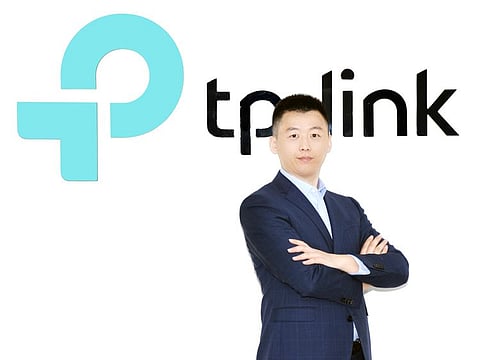Mesh networking: What you need to know
Are you sick of Wi-Fi dead zones? It might be time to invest in a better solution

Someone’s engaged in a tense Call of Duty: Modern Warfare gunfight in the living room; through an iPad in the kitchen, Jaime Oliver is demonstrating steps to roast the perfect chicken; and someone’s Skyping their elderly parents in an upstairs bedroom to escape all the noise. Home router placement can be a tricky discussion — everyone might want to be connected for different reasons, in different areas. Mesh Wi-Fi systems were designed to address this need, particularly as the rise of internet of things (IoT) has made homes smarter.
What does smart mean?
“With the rapid advancement of technology, the definition of smart has been evolving as well,” explains Lucas Jiang, General Manager at TP-Link Middle East and Africa. “For the current generation, something is smart when it can operate on its own and make an informed decision with minimal manual intervention — thereby saving time, money and energy. A decade ago, the idea of controlling your home’s thermostat, lights and security systems remotely via smartphone would have seemed like something straight out of science fiction.
“Little did we know that 2017 would prove to be the year of smart homes, turning imagination into reality through the power of technology. Lately, IoT is gaining attention and what makes it worth the hype is the sheer number of devices getting connected every minute; moreover, it’s no longer just devices that are getting linked to one another. IoT is bridging the gap between the device-to-device, people-to-device as well as people-to-people spaces.”
TP-Link’s newest offering in the mesh Wi-Fi space, the Deco M9 Plus, aims to address a number of consumer pain points.
In a mesh Wi-Fi system, two or more units intelligently link up to boost one another’s connection and form a unified network under a single name. This means you don’t need multiple routers and the frustration that comes with devices losing signal and reconnecting, particularly with smartphones and tablets, which are often used on the move. So you no longer have to worry about Better Call Saul buffering as you carry your phone from bedroom to kitchen. The Deco’s small, disc-shaped design mean it can rest relatively unobtrusively anywhere in a home.
“An enormous number of organisations are anticipated to be jumping on the IoT bandwagon and over implementing the technology in an effort to streamline existing operations. Mesh wireless networking technologies will be a transformational solution for smart homes — with Wi-Fi 6’s revolutionary combination of OFDMA and MU-MIMO technologies generated from Wi-Fi 6, we are in the process of introducing the expansion of our entire whole-home mesh offerings range.
"Deco M9 Plus acts as a hub for all your smart home devices. Adjust settings and create interactions from one platform — there’s no need to buy a specialist smart hub."
Safety first
One concern that is of increasing importance to consumers is security — whether from malicious malware or inappropriate content for children — and brand’s such as TP-Link are adopting new techniques for dealing with this. The Deco M9 Plus, for example, comes with three years of HomeCare baked in. This allows adults to set up unique profiles for their children’s devices, which can be limited in terms of time spent online as well as protected from online threats — a database for which antivirus firm Trend Micro is always updating. Additionally, certain devices and applications can be prioritised for the best connection — if you’ve got an important ZOOM conference with overseas investors, it’s crucial that someone else’s Destiny raid doesn’t interfere with that. “This helps parents ensure a safe internet experience for their kids — even when they’re away from home themselves — and prioritise devices that need the most speed,” explains Jiang. “The security database updates automatically to keep the network safe from the latest cyberthreats.”
Sign up for the Daily Briefing
Get the latest news and updates straight to your inbox



